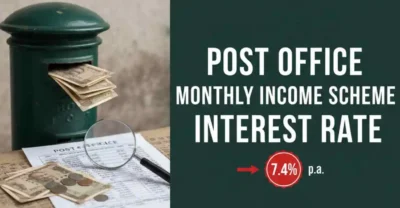If you’ve ever wondered where to put your money for safe and reliable growth, you’ve probably heard about Post Office Investment Plans. For decades, India Post has been more than just a mail service—it’s also a trusted financial institution offering investment and savings schemes for every type of individual. Whether you’re a salaried professional, a retiree, or even a student looking to build the habit of saving, Post Office schemes are designed to meet different financial needs.
In this blog, we’ll break down the top Post Office Investment Plans in 2025, their features, benefits, and interest rates. We’ll also share some insights into which schemes might suit you best.
Why Choose a Post Office Investment Plan?
The first question that pops up is—why the Post Office when there are banks and mutual funds?
- Government-backed safety: All Post Office schemes are backed by the Government of India. That means your money is safe from market fluctuations.
- Wide accessibility: Even if you live in a remote area, there’s likely a nearby post office where you can open an account.
- Variety of schemes: From fixed deposits to pension plans, Post Office offers options for every goal.
- Tax benefits: Several schemes are eligible for deductions under Section 80C of the Income Tax Act.
It’s like having a financial partner who’s both reliable and simple to deal with.
Popular Post Office Investment Plans in 2025
1. Post Office Savings Account
This is the most basic account, much like a bank savings account.
- Interest Rate (2025): Around 4% per annum.
- Minimum Deposit: ₹500.
- Who Should Invest: Ideal for beginners who want safe, liquid savings.
It’s not a high-return plan, but it’s a secure starting point for financial discipline.
2. Post Office Fixed Deposit (Time Deposit)
Also called Post Office FD, this is a straightforward option for guaranteed returns.
- Tenure Options: 1, 2, 3, and 5 years.
- Interest Rate (2025): 6.9% to 7.5%, depending on tenure.
- Tax Benefit: 5-year FD qualifies for Section 80C tax deduction.
If you’re someone who prefers predictable returns, this could be your go-to plan.
3. Post Office Recurring Deposit (RD)
This one helps you save a fixed small amount every month.
- Tenure: 5 years.
- Interest Rate (2025): 6.7% per annum (compounded quarterly).
- Minimum Deposit: ₹100 per month.
Imagine depositing just ₹1000 a month—after 5 years, you’ll end up with a tidy sum.
4. Post Office Monthly Income Scheme (MIS)
This scheme is quite popular among retirees and people looking for regular income.
- Deposit Limit: Up to ₹9 lakh (single) or ₹15 lakh (joint).
- Interest Rate (2025): Around 7.4% per annum.
- Payout: Monthly interest credited directly to your account.
Think of it as your personal pension plan, managed by the Post Office.
5. Senior Citizens Savings Scheme (SCSS)
Specially designed for individuals above 60 years of age.
- Interest Rate (2025): 8.2% per annum.
- Tenure: 5 years (extendable by 3 years).
- Tax Benefits: Eligible under Section 80C.
For senior citizens, this is one of the safest and most rewarding investments.
6. National Savings Certificate (NSC)
This plan is like a fixed deposit but with tax-saving benefits.
- Tenure: 5 years.
- Interest Rate (2025): 7.7% per annum.
- Minimum Deposit: ₹1000, no upper limit.
- Tax Benefit: Eligible under Section 80C.
Great for those who want guaranteed returns and a tax break at the same time.
7. Public Provident Fund (PPF)
A classic long-term wealth creation plan.
- Tenure: 15 years (with the option to extend in 5-year increments).
- Interest Rate (2025): 7.1% per annum.
- Tax Benefits: EEE status (Exempt-Exempt-Exempt).
This is one of the most tax-efficient investment options in India, making it ideal for long-term goals like retirement or children’s education.
8. Kisan Vikas Patra (KVP)
Designed to double your investment in a fixed period.
- Maturity Period (2025): ~115 months (9 years 7 months).
- Interest Rate (2025): 7.5% compounded annually.
- Minimum Deposit: ₹1000.
It’s especially popular among rural investors who want assured doubling of their money.
9. Sukanya Samriddhi Yojana (SSY)
A savings plan for the girl child.
- Eligibility: Parents of girls below 10 years.
- Interest Rate (2025): 8% per annum.
- Tenure: Till the girl turns 21 years.
- Tax Benefits: Section 80C and EEE status.
This is a wonderful scheme for securing your daughter’s higher education or marriage expenses.
Comparing Post Office Investment Plans vs. Bank FDs
You might be thinking, why not just stick to a regular bank FD?
- Interest Rates: In 2025, Post Office FDs often offer higher rates compared to most private banks.
- Safety: Bank FDs are insured up to ₹5 lakh, but Post Office schemes are fully government-backed.
- Accessibility: Post Office branches cover even remote villages.
If safety is your top priority, Post Office wins hands down.
How to Invest in a Post Office Investment Plan
- Visit your nearest post office branch.
- Carry essential documents (ID proof, address proof, and passport-size photos).
- Choose your desired scheme and fill the application form.
- Deposit the money in cash, cheque, or online (where available).
- Get your passbook or certificate for record.
Many schemes are now being digitized, so you may also explore India Post’s online services for easier management.
Things to Keep in Mind Before Investing
- Lock-in periods: Some plans like PPF and NSC have strict lock-in periods.
- Liquidity needs: If you need quick access to funds, choose savings accounts or short-term FDs.
- Taxation: Interest earned on some schemes (like MIS) is taxable.
- Goal matching: Align your plan with your financial goals—short, medium, or long term.
Related Calculator
FAQs on Post Office Investment Plans
Q1. Which Post Office Investment Plan is best for 2025?
It depends on your goal. For regular income, MIS is good. For long-term wealth, PPF and NSC are better. For senior citizens, SCSS is ideal.
Q2. Is it possible to invest online in Post Office schemes?
Yes, many Post Office schemes like PPF and RD can now be managed online through India Post’s e-banking services.
Q3. Are Post Office Investment Plans safe?
Absolutely. They are government-backed, making them one of the safest investment options in India.
Q4. Do Post Office FDs give better returns than banks?
In most cases, yes. The interest rates are usually higher and come with full government guarantee.
Q5. Can NRIs invest in Post Office schemes?
No, currently NRIs are not allowed to open or invest in Post Office savings schemes.
Final Thoughts
The Post Office Investment Plan portfolio for 2025 has something for everyone—whether you want short-term savings, long-term wealth building, or regular income. Their safety, accessibility, and variety make them one of the best options for conservative investors.
So, the next time you’re planning where to park your money, don’t just think of banks and mutual funds. Take a look at what your local Post Office has to offer—you might be pleasantly surprised.
What’s your take on Post Office Investment Plans? Share your thoughts in the comments below!





